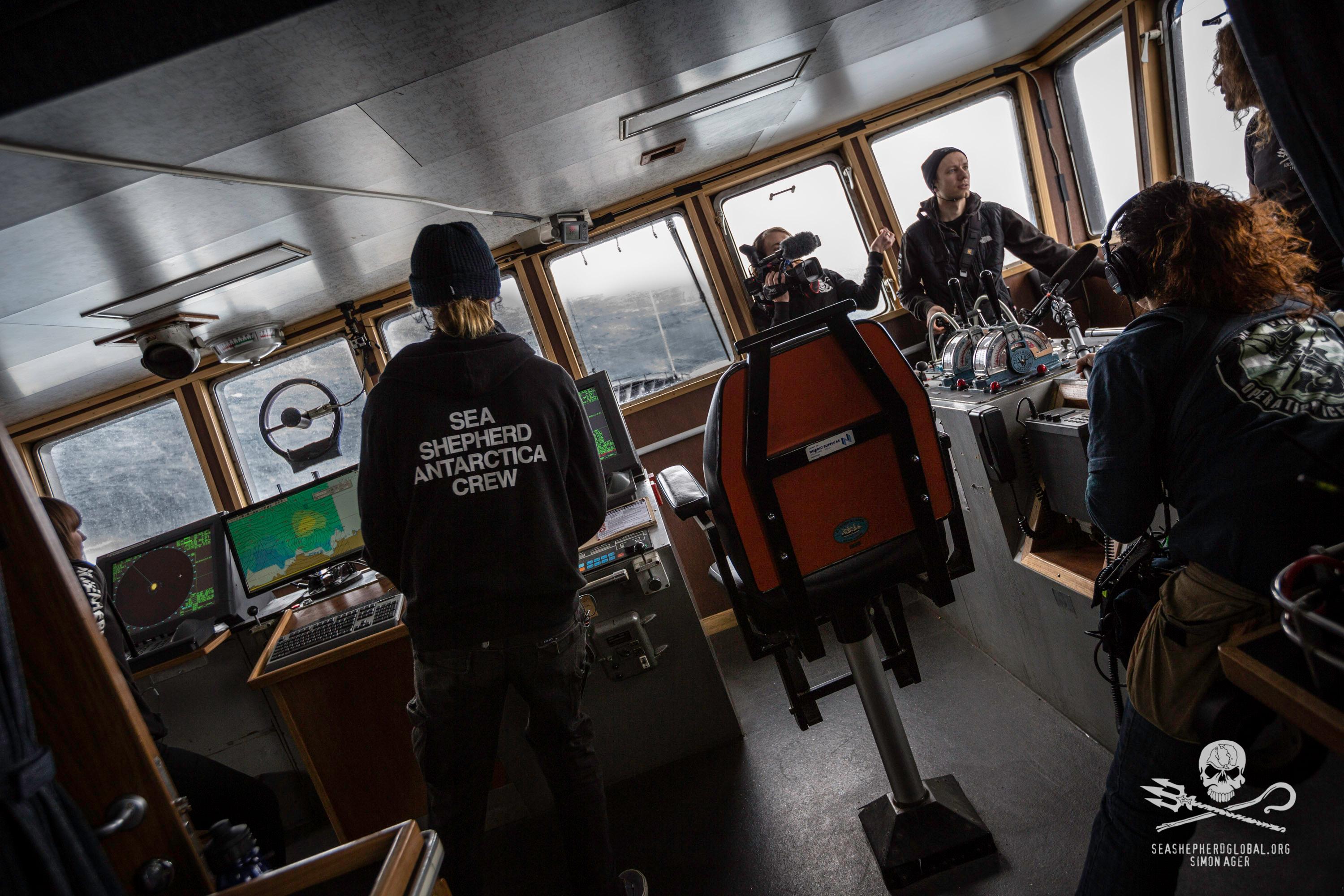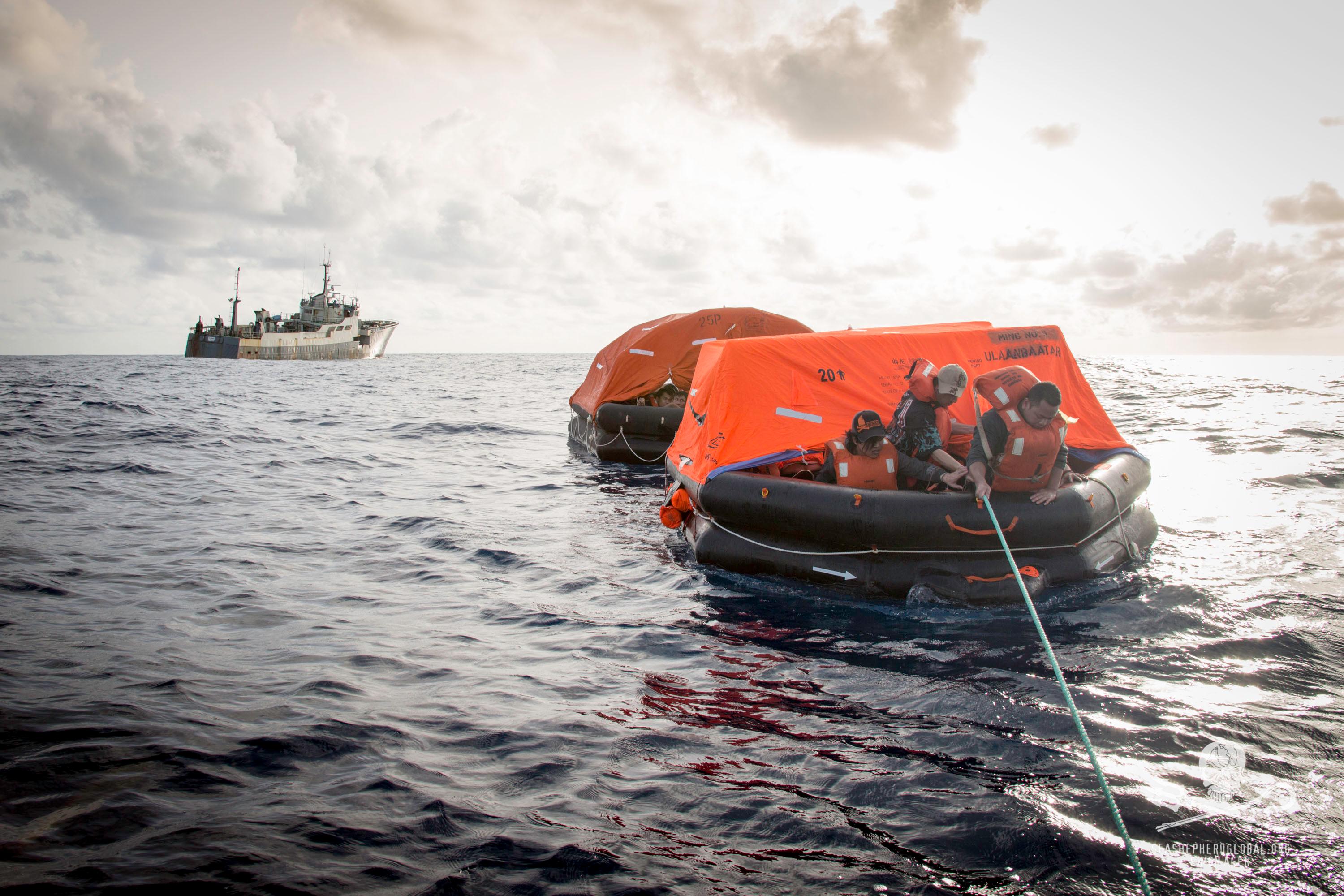Photo credit - Simon Ager
Following Sea Shepherd’s 10th whale defense campaign in the Southern Ocean, Operation Relentless, I was desperate to reconnect with land. I needed the vast wilderness of New Zealand to breath in our latest victory against unscrupulous poachers in the Antarctic and reflect on what the International Court of Justice’s ruling – determining Japan’s ‘scientific’ whaling program to be illegal – would mean for the future of Sea Shepherd’s mission to defend, conserve and protect marine wildlife.
It was 2014, and although it doesn’t really feel like that long ago, a lot has changed since that landmark decision. Shortly after the announcement, Japan confirmed that their whaling fleet would be going on hiatus – ultimately propelling Sea Shepherd into a new era of campaigning. Without a need to return to the Southern Ocean to protect whales, attention shifted to the overfishing of Patagonian toothfish in one of the most remote regions on the planet.
SUPPORTED BY HEROES LIKE YOU
Support independent eco journalism that drives real change.Prehistoric white gold
I wouldn’t be surprised if you’ve never heard of a toothfish. On restaurant menus they’re disguised as ‘Chilean sea bass’ – something that perhaps sounds a little more appetising – and because these fish are so lucrative, they are often referred to as ‘white gold’. We know very little about them but what we do know is incredible.
They are a long-lived species of cod icefish, whose natural life cycle is thought to be around 50 years, weighing in at 10 kilograms on average – although large adults have been known to exceed 100 kilograms. In many ways they look prehistoric and are particularly vulnerable to exploitation because they are slow to reach sexual maturity, spawning in deep water during the Austral winter (winter in the Southern hemisphere).
As juveniles, these fish occupy relatively shallower waters (approximately 300 metres below the surface of the ocean) before migrating deeper as they reach adulthood between six and seven years old. Mostly, they live at depths exceeding 1,500 metres – which is 50 times greater than the recreational dive limit – only occasionally moving off the bottom to feed.

Photo credit - Jeff Wirth
The Bandit Six
In preparing for the campaign, which became known as Operation Icefish, we learnt of six ships that were still illegally fishing for toothfish in the Southern Ocean – despite major crackdowns by the region's regulatory bodies such as CCAMLR. To avoid detection, these vessels were frequently renamed, repainted and reflagged. It wasn’t going to be easy to find them and we faced a lot of criticism about wasting funds, taking the law into our own hands and basically, not knowing what we were doing. Regardless, we had two ships, a crew of 60 international volunteers and a reasonable idea of what fishing grounds look like. So, on December 3rd 2014, we set sail.
It took us about 10 days to get to what we called, the ‘Shadowlands of Antarctica’, and after two days of searching we found the fishing vessel Thunder, right on the Banzare Bank. Of all the Bandit Six, the Thunder was the most elusive. Over the previous decade it had netted $60 million (USD) from its illegal catch and as a result was the second vessel in history to be issued with an Interpol purple notice – which is basically like an international arrest warrant.

Photo credit - Simon Ager
Chasing the Thunder
Clearly, the vessel had been fishing. We radioed them immediately to inform them that what they were doing was illegal and that we were here to escort them direct to Australia, where they would be apprehended. We never expected them to oblige of course, who would! They decided to flee, and so began the longest pursuit in maritime history (although the Guinness Book of Records denied Sea Shepherd the official accolade, because we didn’t formally announce our intention to achieve it beforehand).
I remember all the crew being really excited about reaching the 22nd day of the chase. It meant we’d beaten the previous 21-day record held by the Southern Supporter. This was an Australian patrol vessel that had tailed the Uruguayan toothfish poacher, Viarsa I, for over 3,900 nautical miles, after suspecting them of illegally fishing near Heard Island (located in the Southern Ocean, about 4,000 kilometres south west of mainland Australia). Never in my wildest dreams did I think our chase would last 110 days.
Throughout the long days tailing the Thunder, we were subjected to treacherous ice fields that threatened to damage our ship; some of the worst weather the planet can throw at you; and days upon days of endless drifting. After using the dangers of Antarctica against us, in futile attempts to shake us or potentially break us, the Thunder shifted gear. It seemed like they were trying to run us out of fuel, taking us right up the coast of west Africa – where, to be honest, we found the stifling heat and lack of air conditioning on board much harder to deal with than anything that had gone before.

Photo credit - Simon Ager
Act of Self-Sabotage
During the chase, we speculated about what the Thunder would do and where it would go. I mean, we had very little else to do. Yet not a single one of us ever thought it would culminate with the dramatic sinking of the vessel – a lucid act of self-sabotage by its own captain.
There’d been a bit of a shuffle round in the Sea Shepherd crew and I’d been moved to the 8-12am and pm navigation watches. I remember on the morning of April 6th 2015, around 7am, it was the action stations alarm that raised me. When that particular bell sounds, it had been my job to help get the small boats ready to launch. I threw a Sea Shepherd t-shirt on, straight over my pyjamas, and ran to the boat deck to find out what was happening.
From there, it was clear the Thunder had started to list to its starboard side. There were life rafts in the water, bizarrely with crew already inside – which suggested that all efforts to save the ship had already been exhausted. A distress call had been issued, informing us they were sinking. But how was this possible, what had gone wrong in the last seven hours I’d been asleep?
I ended up being out in the Gemini, one of the Bob Barker’s small boats, for over 10 hours. We were responsible for ensuring the life rafts, containing all 40 of the Thunder’s crew, remained herded together and that everyone was safe. We were waiting for help, which followed in the form of the Sam Simon (another Sea Shepherd vessel that had spent the entire campaign retrieving around 72 kilometres of the Thunder’s abandoned fishing gear).
When the Thunder eventually sank beneath the surface, I looked over to the captain. Along with his crew, he was chanting: “Thunder, Thunder, Thunder”. Oddly, the vessel’s mostly Spanish officers had all boarded the life rafts with neatly packed suitcases. The crew, predominately of Indonesian descent, on the other hand had nothing but a few items hastily thrown inside their pillow cases. It was a very surreal moment, one that’s as difficult to describe as it is for me to even reflect on, more than six years later.

Photo credit - Simon Ager
Beneath the Waves
We got the rescued crew safely on-board the Sam Simon, but before returning to the Bob Barker, our small boat headed to the spot where the Thunder went under. There was literally nothing left to indicate a ship had ever been there. All we were able to retrieve was a folded tarp, half a tin of paint and one life-ring – that we kept as a trophy. That was it. Nothing left. The evidence of its illicit activities gone, forever.
All the Thunder crew were taken to São Tomé and repatriated, except the captain, chief engineer and second mechanic, who were eventually charged with pollution, reckless driving, forgery and negligence. After a lengthy court case, the captain was issued a three-year prison sentence, the chief engineer two years and nine months and the second mechanic two years and eight months – and together they were fined over $17 million (USD).
On the whole, it was quite the achievement, but I can’t help occasionally looking back and feeling somewhat bitter about the fact no-one was ever held accountable for the devastating loss of aquatic lives or the destruction of a fragile marine ecosystem. I can only hope that our story can continue to inspire positive change and one day we’ll all learn to just leave the damned oceans alone.
Find out more - read:
- Catching Thunder: The True Story of the World’s Longest Sea Chase by Eskil Engdal and Kjetil Sæter
- A Renegade Trawler, Hunted for 10,000 Miles by Vigilantes by Ian Urbina in the New York Times
- Outlaw Ocean: Crime and Survival in the Last Untamed Frontier by Ian Urbina
Watch:
- Chasing the Thunder, Vulcan Productions
- Ocean Warriors, Vulcan Productions
Listen:
https://soundcloud.com/ecohustler/ecohustler-podcast-with-lex-rigby-sea-shepherd-oceans-and-animals

Photo credit - Simon Ager
https://soundcloud.com/ecohustler/ecohustler-radio-10-feat-lex-rigby-sea-shepard-and-animals



